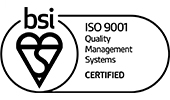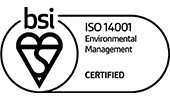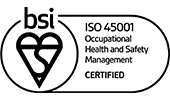The holy grail of productivity
Across the world, from small local companies to global corporations, businesses are searching for one of business’ Holy Grails; the secret to maximising productivity. While systems, software and technology can automate processes and improve efficiency, the one element that will always remain frustratingly hard to control is one of the greatest strengths of any successful business; its people.
Business owners instinctively know that when their staff interact and collaborate naturally, in unforced circumstances, some of the most innovative ideas will emerge. But human nature is such that when these types of meetings are actively encouraged, all spontaneity is lost and with it the spark that creates innovation, invention and creativity.
For this reason, office design is being given the responsibility to try and make these genuine chance encounters occur effortlessly, naturally and more often.
Harvard Business Review published a recent article, ‘Workspaces that move people‘, which explored the emerging trend of office designs containing spaces which actively encourage chance encounters and serendipitous meet-ups. It goes into a lot more detail about the subject and is well worth a read, but here’s what we took from it.
Collision and innovation
The opportunity to maximise chance encounters is one of the reasons why large global brands like Google, & Facebook are designing cathedral-sized spaces. Samsung’s new U.S. headquarters has huge outdoor areas sandwiched between floors where they hope engineers and salespeople will mingle.
Scott Birnbaum, a vice president of Samsung Semiconductor, says it’s been designed to ‘spark not just collaboration but that innovation you see when people collide.’
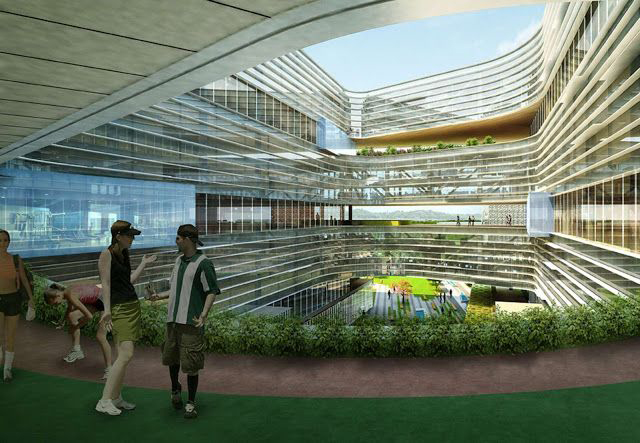
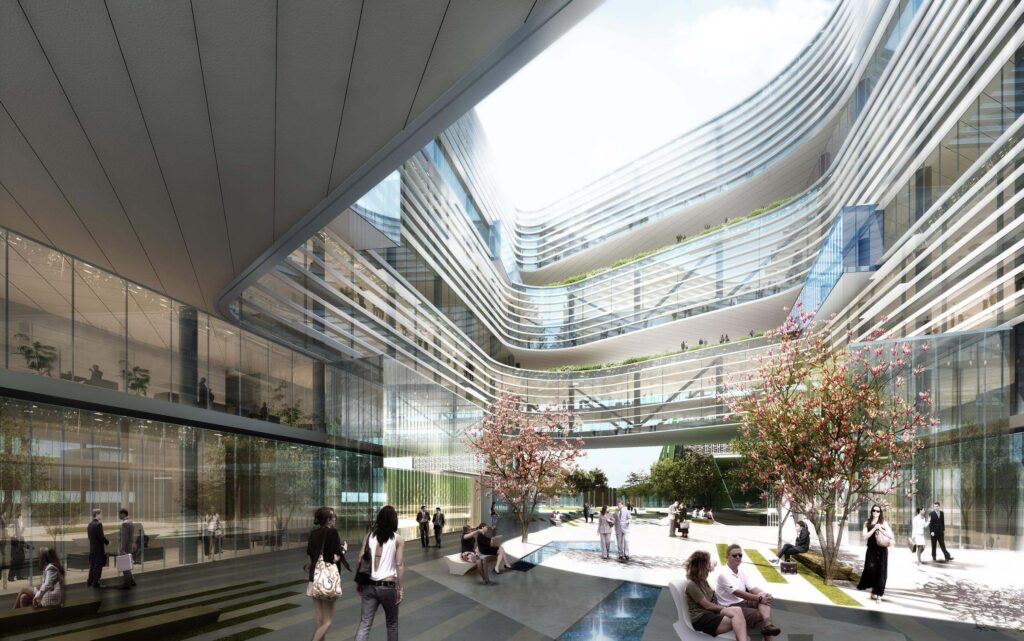
Images: Samsung
But is this really the Holy Grail of productivity that businesses have been looking for? How do we know whether this approach is effective? While companies use cost-per-square-foot to measure the efficiency of a given space, few look at whether the actual office design helps or hinders performance, and they should.
Measuring and metrics
As we’ve explored in relation to the Internet of Things, activity tracking technology can be used to measure the effectiveness of an office layout. This kind of performance data has already started to be collated. Recent research studies asked staff to opt-in to wearing socio-metric badges with infrared, Bluetooth and recording capabilities. The results found that face-to-face interactions were by far the most important activity in an office and that creating collisions, chance encounters and unplanned interactions could actually improve performance. Spaces can even be designed to specifically improve productivity in one area and innovation in another.
In 2003 the office design for the HQ of Norwegian telecommunications company Telenor was ahead of its time, incorporating hot desking and spaces that could easily be reconfigured for different tasks and evolving teams.
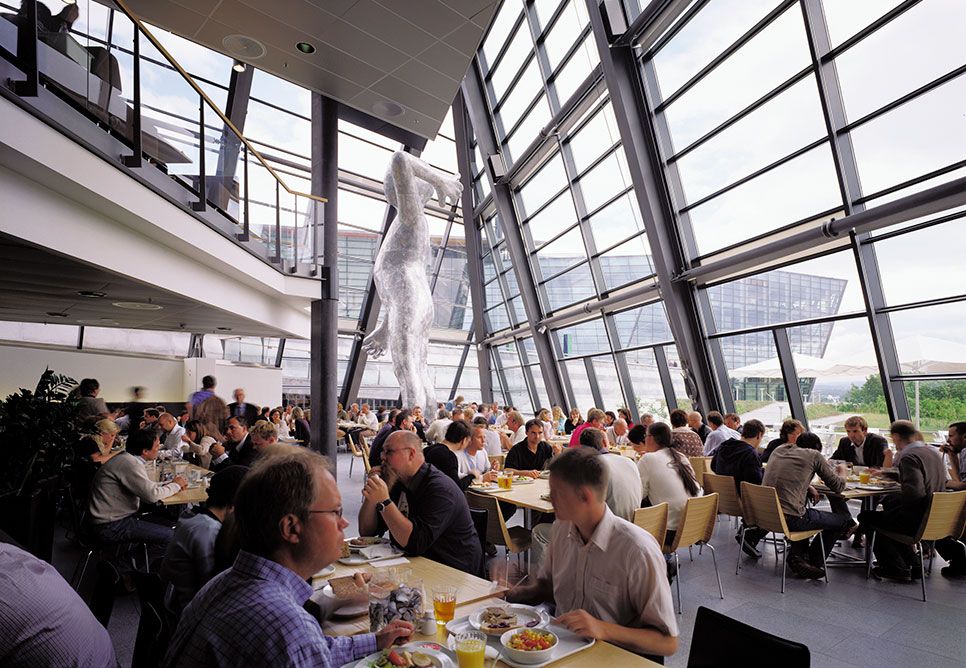
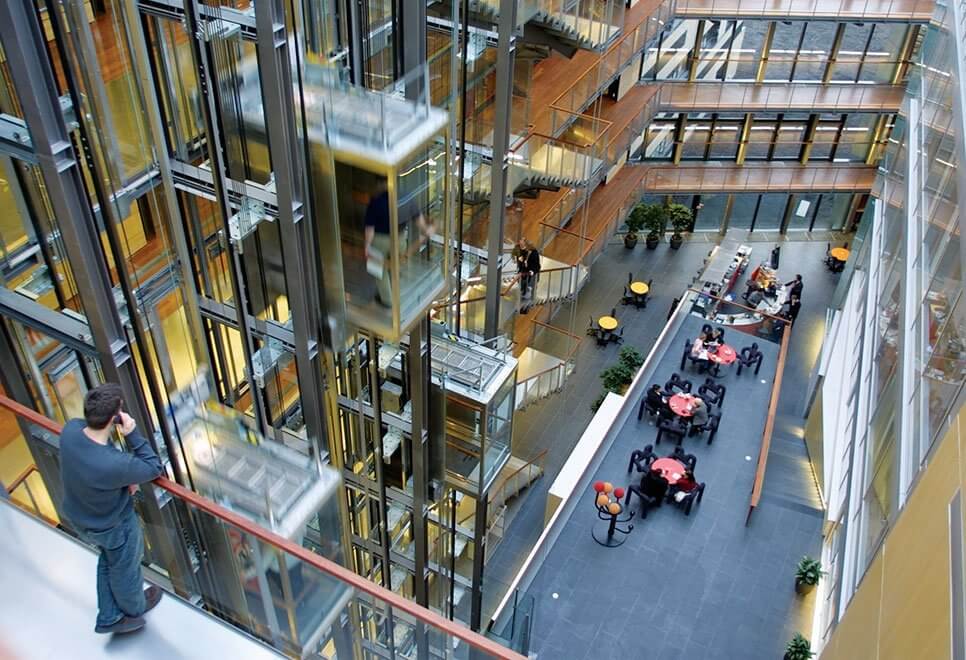
Images: NBBJ
They attributed $12 million worth of savings in real estate costs due to hot desking and, after two months of working in their new office design, 78% of staff were more satisfied with it than they originally expected.
How and why
Given that the likes of Google’s Gmail and Street View were created from informal conversations between engineers, companies like Telenor are looking at creating spaces that encourage employees to meet in the open, bump into unexpected people, and shape their own brainstorming sessions.
It’s worth noting that before a space is drastically changed, you need to understand precisely how that space can be used most effectively and how staff are currently using it most productively. No two industries will be the same, making the brief-taking process of any office fit-out absolutely essential.
The type of interaction will change from business to business but the importance of interaction itself is something that can’t be ignored. Imagine if a staff member has found a more efficient way to do their job but don’t tell their colleagues because there isn’t a space that encourages them to get together and interact informally with others.
Co-working and shared spaces
Clearly, the superconnected nature of the modern office means that people are just as likely to interact digitally as they are face-to-face. Studies with socio-metric badges have shown that face-to-face interaction may actually be enhanced through digital communication. This means that understanding the relationship between the digital and physical workspace is vital, albeit a complex challenge when it comes to office design.
The need for this created the concept of co-working spaces. A 2013 study by Emergent Research found more than 160,000 people were using several thousand co-working spaces in the United States and Europe. They also forecast that globally, more than one million people will be using 12,000 co-working spaces within five years.
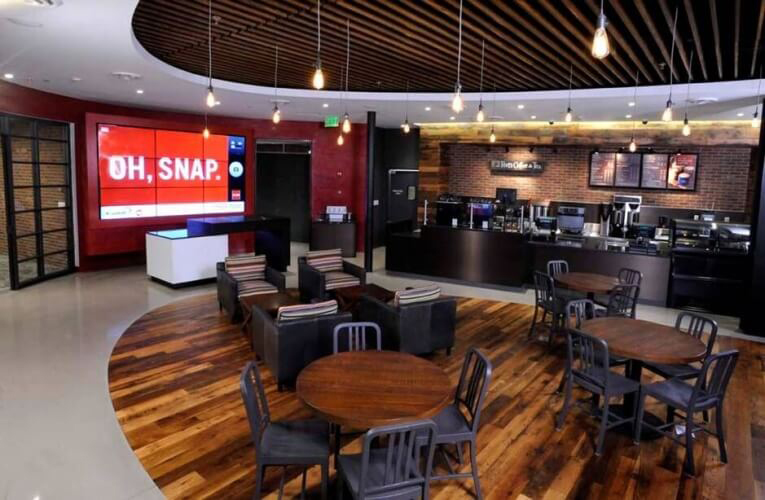
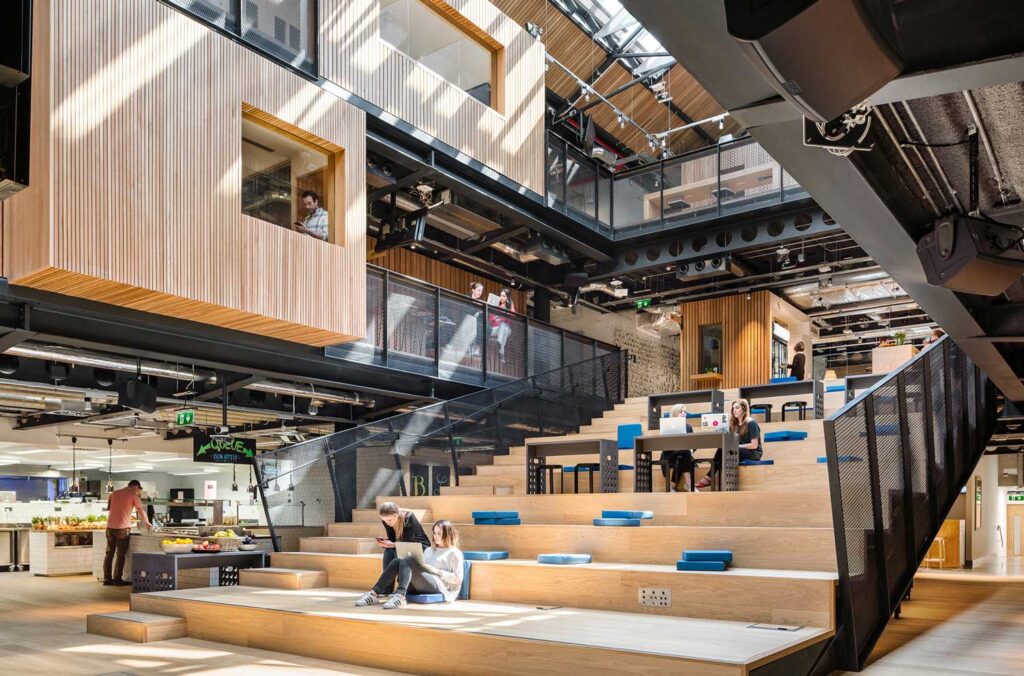
Capitol One 360 Café image: Business Wire – Airbnb’s International Headquarters image: Airbnb
Because co-working spaces exemplify the idea of accessing new knowledge and differing expertise, large corporations have incorporated similar spaces into their offices. Capitol One’s 360 Cafés allow staff to meet with customers, as well as giving them somewhere to do their own work and Airbnb’s conference room in their San Francisco offices is free to book for local businesses.
An extreme example of this is The Downtown Project in Las Vegas; essentially a co-working neighbourhood. Online shoe and clothing shop, Zappos, is investing $350 million in the area around its headquarters to grow the local entrepreneurial community. Co-working spaces include an adapted coffee shop, a Thai restaurant’s courtyard, church hall, a casino lobby, and empty corporate apartment. After six months, research showed an increase in face-to-face encounters, with ten new civic and local community projects launched as a result. They now use a new metric to record their results; ‘collisionable’ hours, or the number of probable interactions per hour per acre.
In the future, the definition of the workspace will change from where work is done to how it’s done, which will have massive implications on office design. And there’s certainly evidence to suggest that spaces which allow chance encounters to occur more naturally are getting us closer to that elusive Holy Grail of productivity.






